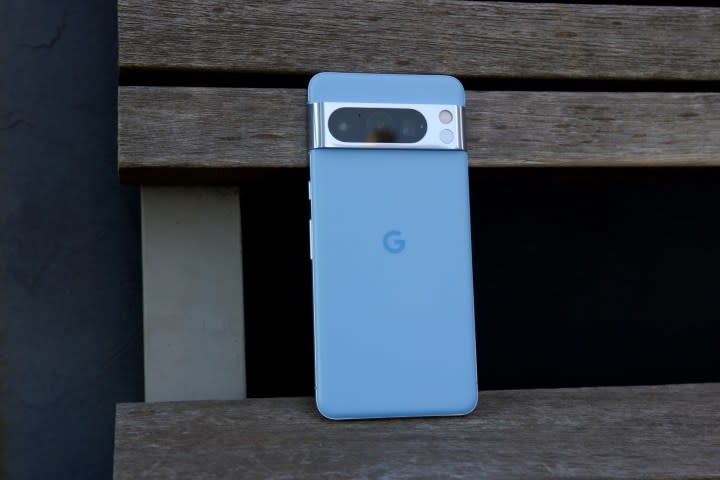The Galaxy S24 is stealing one of my favorite Google Pixel 8 features
This article contains affiliate links; if you click such a link and make a purchase, Digital Trends and Yahoo Inc. may earn a commission.

We’re barely two weeks into 2024, but it’s already time to talk about three of the biggest smartphone releases of the entire year. Samsung has officially announced the Galaxy S24 family, including the typical trio of phones. This year, it’s the Galaxy S24, S24 Plus, and S24 Ultra.
There’s plenty to discuss with these phones — from the refined designs to Samsung’s new Galaxy AI features. But there’s another detail I want to shine the spotlight on, one that was barely mentioned during my pre-briefing with Samsung. We’re talking about software updates.
The entire Galaxy S24 series gets a significant boost for software updates, and it’s a page taken straight from Google’s playbook.
Samsung’s new software promise for the S24

Software updates have been a strong suit of Samsung’s for a few years now. In 2020, the company committed to “three generations of Android OS upgrades” for numerous devices in its Galaxy S, Galaxy Note, and Galaxy A smartphone lineups — plus some foldables and tablets. In 2022, Samsung upped its game with a promise of “four generations” of Android updates for some of its devices.
Now, coinciding with the launch of the Galaxy S24 series, Samsung has confirmed that the S24, S24 Plus, and S24 Ultra will all receive seven years of major OS upgrades and security patches. This ensures all three phones will keep getting updates through January 2031.
It’s unclear if/when Samsung will extend that seven years of support to other phones beyond the Galaxy S24. I think it’s safe to assume Samsung won’t retroactively bring it to older models, but I also wouldn’t be surprised if other releases throughout this year and beyond get similar treatment.
Copying Google in the best way

If that seven-year promise sounds familiar, that’s because it’s the same one Google announced last year for the Google Pixel 8 and Google Pixel 8 Pro. It was a promise that Pixel fans had been waiting ages for, and it gave the Pixel 8 handsets a legitimate advantage over their competitors. Now, Samsung has completely copied it.
I’m sure Google’s Pixel team isn’t thrilled with this sudden news from Samsung, but I couldn’t be happier.
Software updates have been a regular pain point for almost all Android phones for far too long. Smartphone software updates aren’t worth frothing at the mouth for, but they are a very important part of the whole package. When you spend hundreds (if not thousands) of dollars on a phone, you should be able to trust that it’ll be updated for years and years to come.
Three years of updates was a good start a few years ago, and four years was even better. But promising seven years is huge. That means seven years of getting the latest Android versions, the newest features, and the most important security updates. Modern smartphone chips are also better equipped to handle long-term updates than they were a few years ago, so updates you get in 2028 or 2029 on your Galaxy S24 should run just fine.
More of this, please

With Samsung and Google now offering nearly a decade of promised updates for their latest Android phones, I want to see other companies follow in their footsteps.
The OnePlus 11 is promised four major Android updates, while older OnePlus phones get just three. Motorola’s more expensive phones — like the Motorola Edge Plus (2023) — are guaranteed three years of Android upgrades. Plenty of Motorola’s cheaper phones get just one Android OS update before Moto calls it quits.
I don’t expect every single Android phone to get seven-year update guarantees, but there’s clearly room to improve. Google and Samsung have the right idea, and there’s no reason Motorola, OnePlus, and other companies can’t offer identical guarantees for their upcoming flagship phones.
Software updates have never been the flashiest or most exciting thing to talk about. But they also shouldn’t be overlooked, and I’m glad Samsung isn’t doing that with the Galaxy S24 series. It’s another strong example of the right way to handle updates, and I hope Samsung’s competitors take note.
